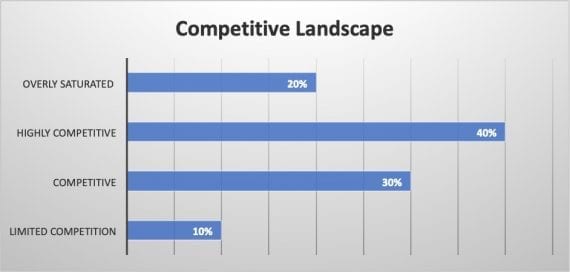In “4 Steps to Prepare for Holiday Sales on Amazon,” my article in July, I offered a quick guide for the upcoming Q4 season.
After that post, my firm surveyed roughly 1,700 sellers with annual revenue from Amazon of at least $5 million. We received 218 responses.
We wanted to understand how brands are preparing for the 2019 holidays, to generate ideas and identify potential roadblocks. I’ll focus on the results in this article.
“What was your revenue on Amazon in November through December 2018?”

Survey results: Revenue from Amazon in November through December 2018.
- $100,001 or more: 60 percent
- $50,001 to $100,000: 5 percent
- $10,001 to $50,000: 10 percent
- $10,000 or less: 25 percent
The categories that saw the most growth during the 2018 holidays were Electronics, Toys & Games, and Clothing & Accessories.
—
“What are your expectations of 2019 holiday sales on Amazon compared to 2018?”

Survey results: Expected increase in 2019 holiday sales on Amazon.
- More than 20 percent growth: 50 percent
- 10 to 19 percent growth: 15 percent
- No change: 30 percent
- More than 10 percent decline: 5 percent
Businesses should not project “no change” in sales or a decline during the holidays. The exception would be if your brand is reducing SKUs or abandoning unprofitable categories. Amazon’s overall revenue is growing by more than 20 percent annually. Third-party sellers are responsible for more than 50 percent of the products.
Brands often feel like they can’t be profitable on Amazon. The solution lies in understanding the shoppers and merchandising the product mix appropriately.
Consider, for example, products that sell for less than $10. Sellers cannot typically make a profit at that price when taking shipping costs into account. Thus, evaluate the products you’re offering. Would shoppers buy bundled products in, say, packs of two or three? If so, the selling fees per item would be significantly less as would the relative shipping costs.
—
“How do you rate the competitive environment for your products on Amazon?”

Survey results: Competitive landscape on Amazon.
- Overly saturated: 20 percent
- Highly competitive: 40 percent
- Competitive: 30 percent
- Limited competition: 10 percent
When brands say that Amazon is “highly competitive,” they typically mean that there are too many resellers of their products. This usually occurs when brands don’t monitor their resellers.
Brands should be protective of which retailers they sell to. In physical stores, brands want to know where their product sits relative to competitors. Brands protect how physical retailers present and advertise their products.
However, brands frequently do not protect their products online. Many allow distributors, retailers, and other companies to list their products on Amazon, eBay, and other marketplaces. This siphons away sales. It also opens the door to counterfeiters.
Is Amazon competitive? Yes. Can Amazon be controlled? Absolutely.
To maximize success, a brand should be the only seller of its items on Amazon. Start with the Brand Registry tools and brand-gating (controlling which companies sell your products). Also closely manage your supply chain to minimize competition.
—
“What is your advertising cost of sales on Amazon?”

Survey results: Advertising cost of sales on Amazon.
- Zero: 30 percent
- Less than 10 percent: 35 percent
- 15 to 20 percent: 20 percent
- Greater than 20 percent: 15 percent
Surprisingly, many brands don’t advertise on Amazon. It is possible to use Amazon Ads efficiently. Just carefully manage the ads and pay attention to the reports from Amazon.
With Brand Analytics, Amazon gives sellers the ability to select the right search terms and targets. With these, you can update product pages and ads to improve delivery.
Amazon’s improved ad platform provides tools to improve where and how ads are shown — including where ads appear outside of Amazon. If you’re going to sell on Amazon, advertise your products there, too.
—
“How often do you review and modify your product listings on Amazon?”

Survey results: Frequency of modifying listings.
- Weekly: 35 percent
- Monthly: 35 percent
- Quarterly: 5 percent
- Rarely, if ever: 25 percent
The quality of your listings will greatly impact sales. Optimizing listings is not a one-time process. Reviewing your ad reports will show you how to improve your listings, such as including the correct search terms and targets. This will help improve your organic rankings. The result is more effective advertising, more sales, and more profits.




